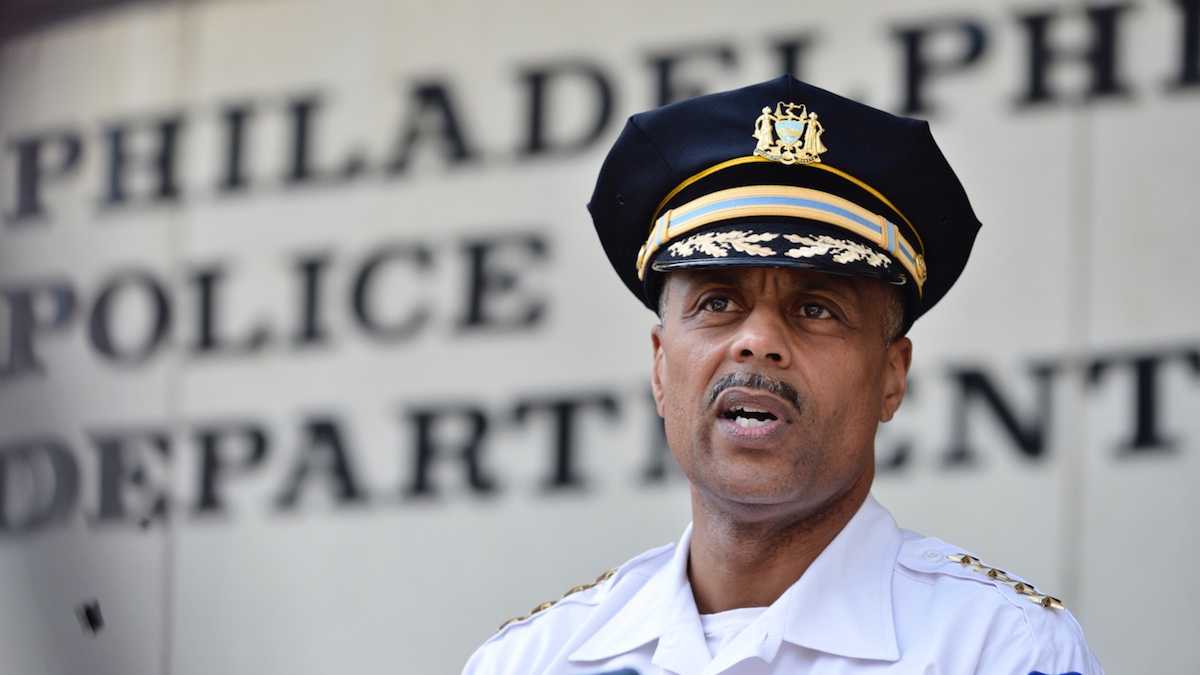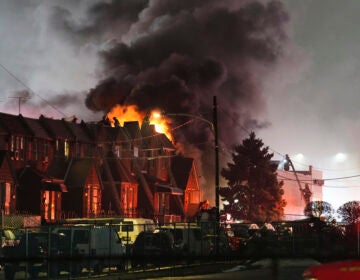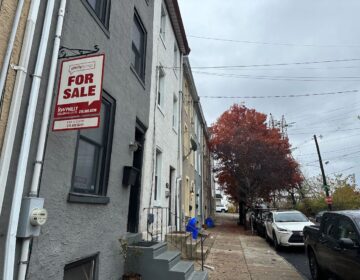Philly police stop-and-frisk troubles diminish, but illegal stops continue
Listen
Philadelphia Police Commissioner Richard Ross said some of the new stop-and-frisk training and auditing that began in 2016 is starting to pay off, but he too said the department's work is far from over. (Bastiaan Slabbers for NewsWorks)
Stopping men for hanging around a corner.
Investigating a group who appears to be “miscreants.”
Questioning pedestrians who look like “vagabonds.”
These are just three of the unconstitutional reasons Philadelphia police officers gave for stopping civilians in the city last year.
A report released Tuesday morning indicates that one out of four of the 140,000 stops police officers carried out in 2016 did not meet the legal standard for having “reasonable suspicion.”
It is the seventh report prepared by civil rights attorneys and filed to the federal judge overseeing changes in how officers stopped and frisked tens of thousands of Philadelphians last year following a 2011 settlement in which the Philadelphia Police Department agreed to reform its use of the practice.
Advocates of reform found some good news in the report: The total number of pedestrian stops dropped by more than one-third, compared with 2015. And police officers more often made legal stops. The number of lawful frisks also went up. It is significant progress measured against the first report submitted to the court, in February 2012, which showed that more than half of all stops were made illegally.
But to attorney David Rudovsky, who, along with the ACLU of Pennsylvania, filed the stop-and-frisk lawsuit, an unacceptable statistic remains: Philadelphia police illegally stopped more than 35,000 pedestrians in 2016.
Police recovered drugs 1.5 percent of the time and found guns on pedestrians less than 1 percent of the time.
“On the one hand, a reduction in the number of stops is good. The quality has gone up somewhat. But we were starting from a pretty low point, so we still think the city has more to do,” Rudovsky said.
Rudovsky noted that more police training and accountability measures were initiated under the leadership of Mayor Jim Kenney and Police Commissioner Richard Ross to address the problem of unlawful stop-and-frisks.
“What the police department did last year should’ve been done under the prior administration,” he said. “It’s taken longer than it should have. We’re now five years into the lawsuit. But we did know that it would take some time in changing a practice that was so deeply embedded in the department.”
Report comes in lead-up to DA primary
The latest stop-and-frisk report comes two weeks before voters go to the polls to decide who will likely become the city’s next district attorney in a fiercely contested seven-way Democratic primary race. Many of the candidates are promising to make Philadelphia’s criminal justice system more equitable, especially for the city’s most vulnerable communities.
Whoever becomes the next top prosecutor will have to grapple with the uncomfortable reality that black Philadelphians are the overwhelming target of the police stops. In 2016, 68 percent of all stops were of African-American pedestrians, even though black residents represent just 43 percent of the city’s total population.
Growing up in North Philadelphia, Landon Rouse, 34, said it is something he has experienced. Often, he said, it feels like officers stop him randomly.
“If you’re in a group of people and you look like you may be be doing something, they stop you. They run up on you a lot,” said Rouse, who is black. “Maybe based on ethnicity. The area you’re in. It happens.”
These kind of individual stories play into an apparent systemic bias that concerns Rudovsky, who said an additional report probing the racial breakdown of the stop-and-frisk program is to be released later this month.
The decline in overall pedestrian stops in Philadelphia is not nearly as striking as the remarkable drop-off in New York City, which saw stops decline by 90 percent after running up against some of the same constitutional problems with the interactions between officers and the civilians they are sworn to protect.
“And they’ve done it while still reducing crime and imprisonment,” Rudovsky added. “And so, there’s not necessarily a correlation between the number of stops and frisks and public safety.”
Even if police can find legal justification for all their stops, the vast majority of them target innocent pedestrians. And so, Rudovsky said, just apologizing could go a long way.
“But when the officer walks away, as we’ve seen historically in Philadelphia, doesn’t give an explanation. Or, worse, the person says, ‘Why [was I] stopped?’ and the officer says, ‘If you keep running your mouth, I’m gonna run you in.’ That’s what degrades police-community relations,” he said.
‘Not like turning off a switch’
Kenney campaigned on “ending” stop-and-frisk, but he now says he just wants cops do fewer stops. And he is pushing the department to ensure that stops-and-frisks are not racially biased.
“It’s not like turning off a switch. You can’t come in on Day 1, and turn off a switch, and stop it automatically,” Kenney said. “This took a lot of work, and a lot of thinking and a lot of process in order for us to get where we are, and we’re not even close to being done yet.”
The report does say that under Kenney, stop-and-frisk reforms have accelerated after years of languishing under the prior administration.
Some of the delays in improvement, Rudovsky said, have to do with the police department putting off internal reforms that are now underway, such as maintaining an electronic database of all stops and frisks; retraining officers about properly interacting with civilians (which officers are reminded about during routine roll call); and instituting additional auditing.
The new department rules also require that police supervisors hold accountable officers who continually stop pedestrians illegally, but that has yet to really happen, according to Rudovsky’s report.
“There must be a comprehensive and effective process for identifying officers (or their supervisors) who repeatedly engage in stops or frisks without reasonable suspicion and, critically, there is a need for specific retraining, increased supervision, or other remedial, disciplinary action for these practices,” Rudovksy wrote to the court.
Ross said the department receives calls every day about suspicious activity in the neighborhoods. Investigating those situations, he said, is a basic part of police work. And it is possible to strike the right balance between public safety and not overstopping pedestrians, Ross said.
“It is a delicate one,” Ross said. “Because there are people who are very frustrated about not only quality-of-life issues in their neighborhood, people have a right to live in peace.
“There’s also an issue of people just wanting some sense of safety.”
WHYY is your source for fact-based, in-depth journalism and information. As a nonprofit organization, we rely on financial support from readers like you. Please give today.




